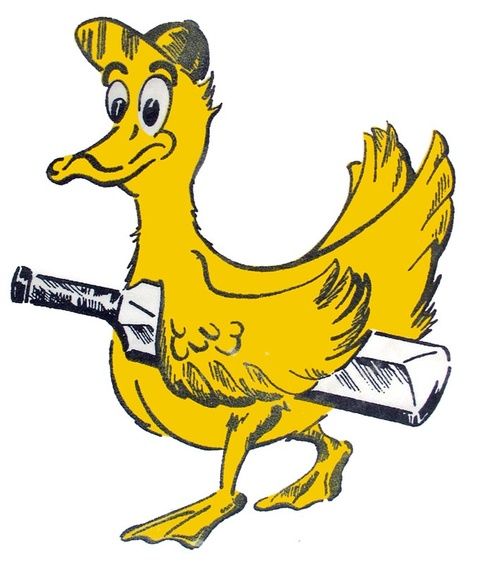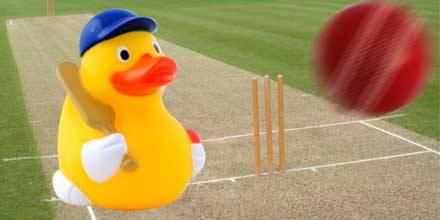7 Different Types Of DUCKS In Cricket

Getting dismissed for zero is always a humiliation for any batsman. Not only is it tagged as a duck, but to add to the humiliation, there are several classifications of ducks. Before we discuss all those types, let us understand the history of the Cricket Duck.
The term “duck” is believed to have originated from the shape of the duck’s egg. It resembles ‘0’ and hence scoring a 0 is called a duck.

This term made a pretty royal entry into the world of cricket. On 17th July 1866, the Prince of Wales (the future Edward VII) was dismissed for nought. A Daily Times correspondent for the Otago Witness recorded, “Next, we see the Prince of Wales in the field, as one of the Zingari, against the Gentlemen of Norfolk. H.R.H. had the honor of performing short-leg duties previously to handling the bat, and, when at length expectant eyes were fixed on Britain’s heir at the wicket, it was piteous to behold his signal failure; he was bowled cut on the instant and retired to the royal pavilion on a duck’s egg”. Thus, the duck became a batsman’s nightmare.

The first duck was scored by Ned Gregory when Australia played against England in 1877.
The definitions of some of the following ducks vary regionally. Some terms have different meanings in different parts of the world.
7 Different Types Of DUCKS In Cricket
1. Golden Duck
A golden duck occurs when a batsman is dismissed on the first ball they face in an innings. It is considered to be the most unfortunate kind of duck as the batsman is out without scoring a single run. The term “golden” is used to signify the rarity and value of gold, making this kind of duck particularly disappointing for the batsman.
2. Silver Duck
A silver duck is when a batsman is dismissed on the second ball they face in an innings without scoring any runs. While not as unfortunate as a golden duck, a silver duck still signifies a quick and disappointing end to the batsman’s innings.
3. Bronze Duck
A bronze duck occurs when a batsman is dismissed on the third ball they face in an innings without scoring any runs. Similar to a silver duck, a bronze duck represents a swift dismissal and a missed opportunity for the batsman to contribute to the team’s score.
4. Diamond Duck
A diamond duck is a rare kind of duck where a batsman is dismissed without facing a single ball. This can happen if a batsman is run out or dismissed by a stumping on the very first ball they should have faced. The term “diamond” is used to signify the rarity and value of diamonds, making this kind of duck quite special.
5. Non-Striker’s Duck
A non-striker’s duck occurs when a batsman is dismissed without facing a ball while being at the non-striker’s end. This can happen if the striker is dismissed or run out before the non-striker has faced a delivery. While it may not directly affect the non-striker’s individual score, it does contribute to the team’s total and can be disappointing for the batsman.
6. Pair
A pair is when a batsman is dismissed for a duck in both innings of a two-innings match. It is considered a significant failure for the batsman as they have failed to score any runs in the entire match. A pair is often seen as a reflection of poor form or a lack of skill.
7. King Pair
A king pair is a special kind of pair where a batsman is dismissed for a golden duck in both innings of a two-innings match. It is an extremely rare occurrence and is considered a significant failure for the batsman. The term “king pair” is used to emphasize the rarity and unfortunate nature of this kind of duck.
In conclusion, ducks in cricket refer to the score of zero by a batsman. There are different kinds of ducks, each with its own significance and impact on the game. From the unfortunate golden duck to the rare diamond duck, these terms add depth and intrigue to the sport of cricket. Whether they represent disappointment or a missed opportunity, ducks are an integral part of the game and contribute to its unique terminology.
Read also – The Truth About The Astonishing Dwarf Village of China



